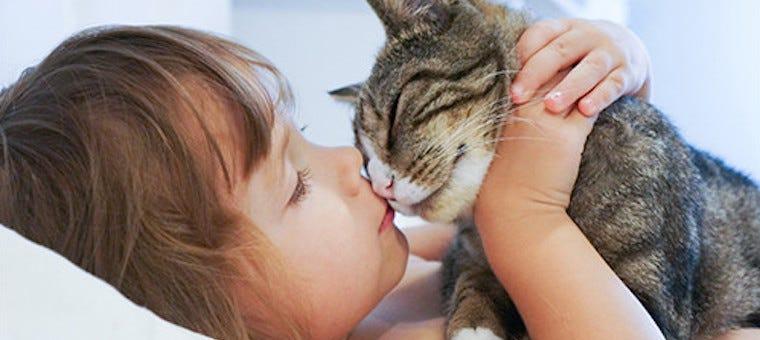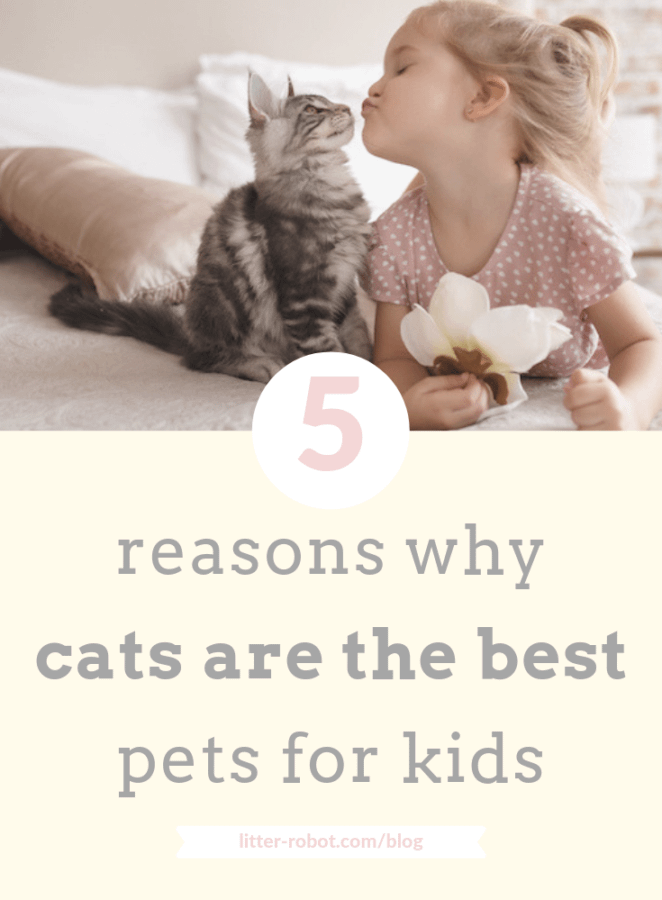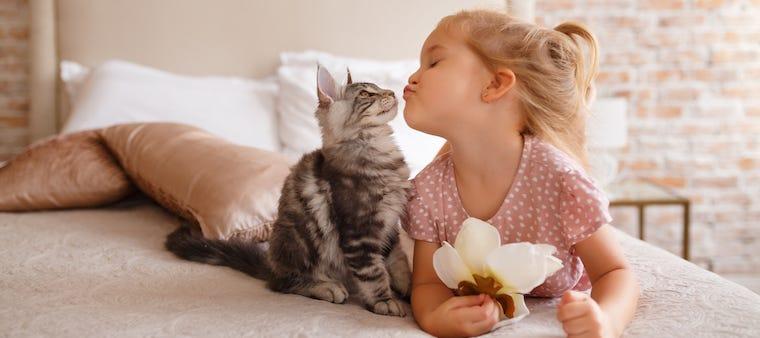It’s National Kids and Pets Day, and we’re here to take a stance: Cats are the best pets for kids! Our feline friends offer a hands-on yet manageable relationship for children that you often can’t find with pets like rodents, rabbits, and reptiles. Let’s take a look at why cats are the best pets for kids.

Cats teach kids how to be courteous
Litter-Robot spoke with lifestyle and mommy blogger Kayla Nelson, whose Little Darlings account highlights her time as a mother to two young children and one Ragdoll named Apollo. “[My kids] were 1 and 3 when I brought the kitten home,” said Kayla. “The kids reacted really well and understood that the kitten was tiny and that they needed to be gentle.”
Children realize early on that a certain respectful etiquette is necessary to make friends with a cat. “The cat has positively influenced my kids,” continued Kayla, “because they do need to be more aware of their surroundings and they’ve learned to be careful and gentle.”
Cats teach kids how to be patient
Whoever heard of a patient toddler? Okay, we’re not claiming that cats are miracle workers—but they do provide an opportunity for teaching children to take things slowly. A child’s first instinct might be to chase after a cat, catch the cat, and snuggle him silly. But, he’s likely to wind up with a scratch (or several) if he takes that route.
Kayla elaborated on what it’s like introducing cats and babies. “For parents introducing [a new cat], I would suggest letting the cat explore the house without the kids following him around or trying to play,” she said. “Let the kitten come play when he’s ready and has finished exploring. We found ours to be pretty timid when he first came here. Within a few hours he was fine and willing to play, but I made sure my kids weren’t bothering him.”
Cats teach kids how to be responsible
Cats can provide a lesson in responsibility for young children—and boost children’s self-esteem in the process. “My almost-4-year-old feeds the cat every day,” said Kayla, “and she feels important doing that.”
Although supervision is required, a child as young as three or four can begin learning about what it takes to care for an animal. Because cats can thrive indoors and in a limited space (such as a small apartment), kids have more opportunity to oversee their pet’s major needs—namely food, water, and litter. (With a little help from the Litter-Robot, overseeing the litter situation is vastly easier. Check out Kayla’s post and video about how much she and her cat love the Litter-Robot!)

Most cats make great companions for kids
It is natural for parents to wonder how well cats and babies will get along. “I did have reservations about clawing and biting because kittens do like to play,” said Kayla.
Although you will likely have a positive experience introducing kittens and children, you should also consider adopting an older, calmer cat. Some cat breeds known for their calm, mellow demeanors include the Birman, British Shorthair, Persian, and Ragdoll. For older children, consider breeds that are particularly playful and can even be trained to fetch, walk on a leash, and play in water; these include the Abyssinian, Bengal, Cornish Rex, Munchkin, Sphynx, and many more.
Breeds that aren’t known to be extremely fond of children include the Himalyan, Russian Blue, and Turkish Angora/Van. But, every cat is a unique case!
Cats may boost children’s immune systems
Not only are cats fastidiously hygienic, but they’re also doing their part to help you raise healthier kids. Recent studies have shown that having a cat or dog in the house during a baby’s first year of life can help improve the infant’s immune system, decrease the number of respiratory infections and colds, and guard against development of allergies and asthma later in life. We’ll take that!
We could go on and on about why cats are the best pets for kids. We may be a tad biased, but there’s no denying that cats have a lot to offer children—both in friendship and in life lessons.









